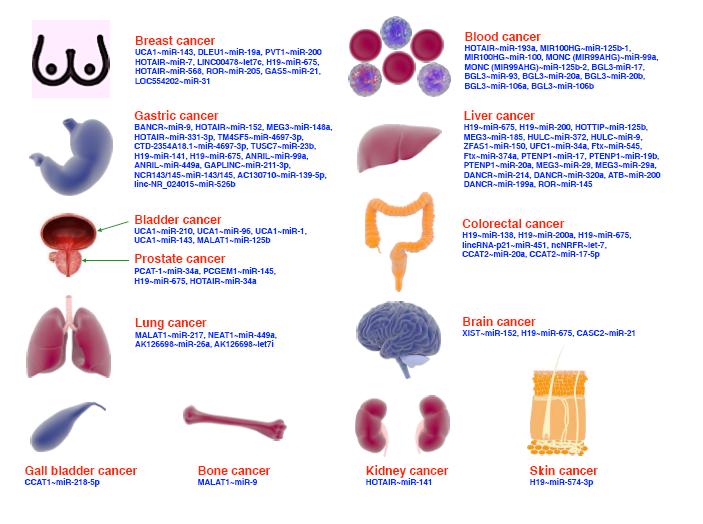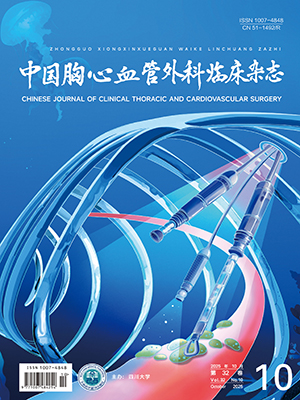| 1. |
Krist AH, Davidson KW, Mangione CM, et al. Screening for lung cancer: US Preventive Services Task Force recommendation statement. JAMA, 2021, 325(10): 962-970.
|
| 2. |
Succony L, Rassl DM, Barker AP, et al. Adenocarcinoma spectrum lesions of the lung: detection, pathology and treatment strategies. Cancer Treat Rev, 2021, 99: 102237.
|
| 3. |
Takahashi Y, Eguchi T, Kameda K, et al. Histologic subtyping in pathologic stage Ⅰ-ⅡA lung adenocarcinoma provides risk-based stratification for surveillance. Oncotarget, 2018, 9(87): 35742-35751.
|
| 4. |
Choi SH, Jeong JY, Lee SY, et al. Clinical implication of minimal presence of solid or micropapillary subtype in early-stage lung adenocarcinoma. Thorac Cancer, 2021, 12(2): 235-244.
|
| 5. |
Saji H, Okada M, Tsuboi M, et al. Segmentectomy versus lobectomy in small-sized peripheral non-small-cell lung cancer (JCOG0802/WJOG4607L): a multicentre, open-label, phase 3, randomised, controlled, non-inferiority trial. Lancet, 2022, 399(10335): 1607-1617.
|
| 6. |
Shi Y, Wu S, Ma S, et al. Comparison between wedge resection and lobectomy/segmentectomy for early-stage non-small cell lung cancer: a Bayesian meta-analysis and systematic review. Ann Surg Oncol, 2022, 29(3): 1868-1879.
|
| 7. |
Bertolaccini L, Cara A, Chiari M, et al. Real-world survival outcomes of wedge resection versus lobectomy for cT1a/b cN0 cM0 non-small cell lung cancer: a single center retrospective analysis. Front Oncol, 2023, 13: 1226429.
|
| 8. |
Zhu M, Xu Y, Huang J, et al. Sublobar resection for lung adenocarcinoma less than 2 cm containing solid or micropapillary components radiologically presented as consolidation-to-tumor ratio (CTR)≤0.25. Transl Lung Cancer Res, 2024, 13(7): 1685-1694.
|
| 9. |
Fong KY, Chan YH, Chia CML, et al. Sublobar resection versus lobectomy for stage ⅠA non-small-cell lung cancer≤2 cm: a systematic review and patient-level meta-analysis. Updates Surg, 2023, 75(8): 2343-2354.
|
| 10. |
Ding H, Xia W, Zhang L, et al. CT-based deep learning model for invasiveness classification and micropapillary pattern prediction within lung adenocarcinoma. Front Oncol, 2020, 10: 1186.
|
| 11. |
Chen LW, Yang SM, Chuang CC, et al. Solid attenuation components attention deep learning model to predict micropapillary and solid patterns in lung adenocarcinomas on computed tomography. Ann Surg Oncol, 2022, 29(12): 7473-7482.
|
| 12. |
Wang F, Wang CL, Yi YQ, et al. Comparison and fusion prediction model for lung adenocarcinoma with micropapillary and solid pattern using clinicoradiographic, radiomics and deep learning features. Sci Rep, 2023, 13(1): 9302.
|
| 13. |
Yang Y, Tan M, Ma W, et al. Preoperative prediction of the degree of differentiation of lung adenocarcinoma presenting as sub-solid or solid nodules with a radiomics nomogram. Clin Radiol, 2022, 77(9): e680-e688.
|
| 14. |
Dong H, Yin LK, Qiu YG, et al. Prediction of high-grade patterns of stage ⅠA lung invasive adenocarcinoma based on high-resolution CT features: a bicentric study. Eur Radiol, 2023, 33(6): 3931-3940.
|
| 15. |
Goldstraw P, Chansky K, Crowley J, et al. The IASLC Lung Cancer Staging Project: Proposals for revision of the TNM stage groupings in the forthcoming (eighth) edition of the TNM classification for lung cancer. J Thorac Oncol, 2016, 11(1): 39-51.
|
| 16. |
Shiono S, Yanagawa N. Spread through air spaces is a predictive factor of recurrence and a prognostic factor in stage Ⅰ lung adenocarcinoma. Interact Cardiovasc Thorac Surg, 2016, 23(4): 567-572.
|
| 17. |
刘显平, 李晓, 杨帆. 非小细胞肺癌根治性切除术后复发转移模式研究进展. 中国肺癌杂志, 2022, 25(1): 26-33.Liu XP, Li X, Yang F. Pattern of recurrence and metastasis after radical resection of non-small cell lung cancer. Chin J Lung Cancer, 2022, 25(1): 26-33.
|
| 18. |
Burdett S, Pignon JP, Tierney J, et al. Adjuvant chemotherapy for resected early-stage non-small cell lung cancer. Cochrane Database Syst Rev, 2015, 3: CD011430.
|
| 19. |
Ojeda FM, Jansen ML, Thiéry A, et al. Calibrating machine learning approaches for probability estimation: a comprehensive comparison. Stat Med, 2023, 42(29): 5451-5478.
|
| 20. |
Yang Y, Tan J, He Y, et al. Predictive model for diabetic retinopathy under limited medical resources: a multicenter diagnostic study. Front Endocrinol (Lausanne), 2022, 13: 1099302.
|
| 21. |
Mikubo M, Tamagawa S, Kondo Y, et al. Micropapillary and solid components as high-grade patterns in IASLC grading system of lung adenocarcinoma: clinical implications and management. Lung Cancer, 2024, 187: 107445.
|
| 22. |
Jeon HW, Kim YD, Sim SB, et al. Prognostic significance using histologic subtype in stage Ⅰlung adenocarcinoma. J Thorac Dis, 2024, 16(10): 6760-6769.
|
| 23. |
Shen C, Liu H, Li B, et al. Risk stratification and adjuvant chemotherapy for high-risk stage ⅠA lung adenocarcinoma: the unmet needs. Thorac Cancer, 2025, 16(2): e15521.
|
| 24. |
Li R, Li Z, Yang Z, et al. The presence of micropapillary and/or solid subtypes is an independent prognostic factor for patients undergoing curative resection for stage Ⅰ lung adenocarcinoma with ground-glass opacity. Transl Lung Cancer Res, 2024, 13(2): 256-268.
|
| 25. |
Pan X, Fang R, Zhang B, et al. Pathological and imaging features of pulmonary invasive mucinous adenocarcinoma: a retrospective cohort study. Transl Lung Cancer Res, 2024, 13(6): 1376-1382.
|
| 26. |
He B, Song Y, Wang L, et al. A machine learning-based prediction of the micropapillary/solid growth pattern in invasive lung adenocarcinoma with radiomics. Transl Lung Cancer Res, 2021, 10(2): 955-964.
|
| 27. |
Huang H, Yan Z, Li B, et al. LungPath: artificial intelligence-driven histologic pattern recognition for improved diagnosis of early-stage invasive lung adenocarcinoma. Transl Lung Cancer Res, 2024, 13(8): 1816-1827.
|
| 28. |
Papadimitroulas P, Brocki L, Christopher Chung N, et al. Artificial intelligence: deep learning in oncological radiomics and challenges of interpretability and data harmonization. Phys Med, 2021, 83: 108-121.
|
| 29. |
Rauh SP, Heymans MW, Mehr DR, et al. Predicting mortality in patients treated differently: updating and external validation of a prediction model for nursing home residents with dementia and lower respiratory infections. BMJ Open, 2016, 6(8): e011380.
|
| 30. |
Zhao Z, Wickersham N, Kangelaris KN, et al. External validation of a biomarker and clinical prediction model for hospital mortality in acute respiratory distress syndrome. Intensive Care Med, 2017, 43(8): 1123-1131.
|
| 31. |
Gulati G, Upshaw J, Wessler BS, et al. Generalizability of cardiovascular disease clinical prediction models: 158 independent external validations of 104 unique models. Circ Cardiovasc Qual Outcomes, 2022, 15(4): e008487.
|
| 32. |
Eguchi T, Kumeda H, Miura K, et al. Saving lives in thoracic surgery: balancing oncological radicality and functional preservation, transitioning from standard pneumonectomy to targeted sublobar resection. Cancers, 2024, 16(4): 819.
|
| 33. |
Fukui M, Matsunaga T, Hattori A, et al. Sublobar resection is not always superior for early-stage lung cancer in high-risk patients. Eur J Cardiothorac Surg, 2024, 65(1): ezad325.
|
| 34. |
Beasley MB, Dembitzer FR, Flores RM. Surgical pathology of early stage non-small cell lung carcinoma. Ann Transl Med, 2016, 4(12): 238.
|
| 35. |
Peng B, Li G, Guo Y. Prognostic significance of micropapillary and solid patterns in stage ⅠA lung adenocarcinoma. Am J Transl Res, 2021, 13(9): 10562-10569.
|
| 36. |
Liu W, Zhang Q, Zhang T, et al. Minor histological components predict the recurrence of patients with resected stage Ⅰ acinar- or papillary-predominant lung adenocarcinoma. Front Oncol, 2022, 12: 1090544.
|
| 37. |
Hou Y, Song W, Chen M, et al. The presence of lepidic and micropapillary/solid pathological patterns as minor components has prognostic value in patients with intermediate-grade invasive lung adenocarcinoma. Transl Lung Cancer Res, 2022, 11(1): 64-74.
|
| 38. |
靳凯淇, 沈莹冉, 吴易沐, 等. 是否存在实体型或微乳头型成分与ⅠA期肺腺癌患者预后关系的回顾性队列研究. 中华外科杂志, 2022, 60(6): 587-592.Jin KQ, Shen YR, Wu YM, et al. Association between the presence of solid or micropapillary components and survival outcome in stage ⅠA lung adenocarcinoma cases: a retrospective cohort study. Chin J Surg, 2022, 60(6): 587-592.
|




